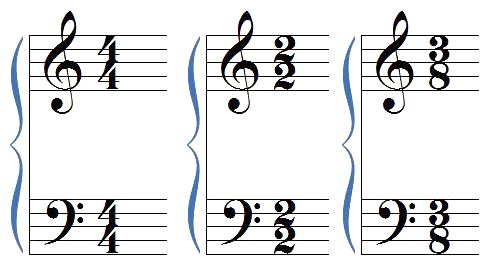This site talks about musical pitches. The frequency determines how high or how low a pitch can sound, for example: The pitch of a high D ( Or D5) is 587.33 Hz while a low pitch such as a low C (C0) is 16.35 Hz. The pitch of a standard A (A4) rests at 440 Hz. Most people tune with A4. The ending statement of the article states that some musicians can slowly gain a degree of perfect pitch ( Being able to sing each individual note, improvise, compose by ear etc.) just by being familiar with A4 note.
Tag Archives: violin
Module 1 Post 3 [ Frequency modulation and music synthesis ]
Frequency modulation and music synthesis
This article comes from the AMS (American Mathematical Society). The article talks about wave frequencies and also Frequency Modulation. When we hear noises (music) our brains are processing the sound waves. They also state that sound is created by different types of air pressure. Frequency Modulation is just that. Modulating a signal so that it matches another signal. I want to use this article to study the perception of music and noises 
Module 1 Post 2 [ Mathematics and Music]
This page provides lots of links such as videos, podcasts and articles. These links explain counting, intervals, scales, pitches, overtones, patterns, symbols, harmonies and tones. This site has gathered lots of links from trusted sources ( Such as Tedx Talks)
The AMS ( American Mathematical Society) has lots of articles of how math and music are similar. They have listed over 20 links to trusted sources such as universities like “Rice University” (William Marsh Rice University). I think I will use this page as a place where I can gather extra information from links that I might’ve missed when researching for my topic.

4/4 = 4 quarter notes (4) in a measure. 2/2 = 2 whole notes (2) in a measure. 3/8 = 3 eighth notes (8) in a measure.
Module 1 Post 1 [Music and Mathematics ]
This site explains a wide variety of how music can relate with mathematics. The site explains that most music pieces have a form known as “Binary” and “Ternary” form. Binary is a musical form that has 2 sections: A and B. Sometimes it might be A-A-B-B if the composer wants to repeat a section.Ternary is a musical form that has 3 sections. The most common type for Ternary form is A-B-A formation.
This site also explains how a scale is a set of pitches used in creating pieces. Most pieces stay in one key while others change into other keys. Each key has a minor and major key. The higher a note is, the higher the hertz (Hz). A tonic note on A major would have a lower hertz while a note such as a high A would have a higher hertz.This is known as an interval.
I believe this site will be helpful to me because it provides tons of links while also providing a vast variety of why music and mathematics are related.
